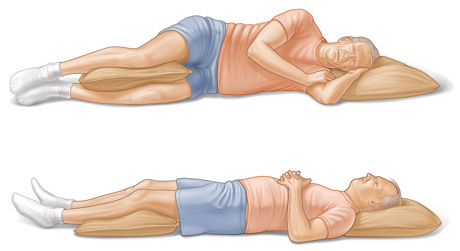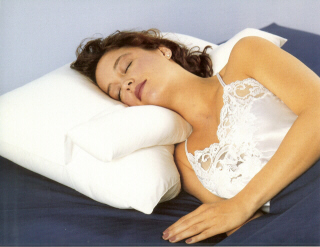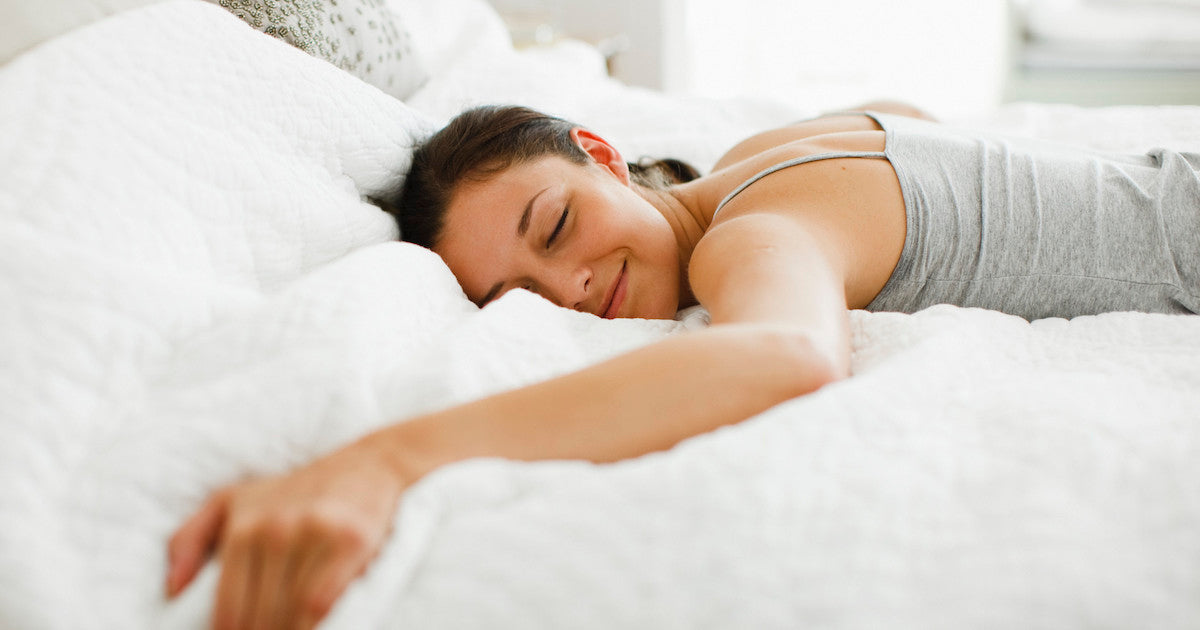
Not a recommended sleeping position for humans.
Sleep is hugely important. Like it or not, you spend a ton of your life in bed.
So use that time to make your body better – instead of making it worse.
When people come to me with chronic mobility/flexibility/myofascial pain issues, sleeping position is often the first thing I inquire about.
Why? Because improper sleeping posture is horribly common, and it has negative implications all over your body.
In constructing optimal sleep position, we’ll consider the health of your:
- Spine (especially neck)
- Shoulders
- Hips
Here’s What Most People Are Doing Wrong

When laying on your back, do you feel the need to push one knee out to the side in a “figure 4” position? That’s your hips screaming for support – begging to be open.
Sleeping on your stomach is a bad idea, period. It’s guaranteed bad for your neck, shoulders, and hips. It’s an unsalvageable position. Just don’t ever do it.
Side sleepers are often lacking support for their cervical spine (fancy term for neck), upper shoulder, and hips. Attempting to compensate for the nonexistent neck support often results in problems for the lower shoulder as well.
Back sleepers also tend to miss out on neck support, resulting in the head tilting back, and the shoulders rolling forward – causing problems there too.
Another huge issue is lack of support for allowing open hips. See the picture at left for how your body tries to compensate.
Optimal Sleeping Position – Back
Try no pillow at all under your head. Your cervical spine (that’s your neck) has a natural curve that supports it well while laying on your back.
Put another pillow under your knees. This will force them up a bit, preventing over extension of your hips without you having to externally rotate them like crazy to open them up. This will reduce tightness in your hips and flutes, lessening back and leg pain.
Put a final pillow on your chest/stomach, for your arms to rest on. This will prevent the load of your arms from torquing your spine into an s-shape, which can cause shoulder, back, and neck problems.

If he added a pillow to support his arms in both positions (especially on the side – that arms near face thing is bad news), and ditched the pillow under his head while on his back, this guy would have it figured out.
Optimal Sleeping Position – Side
You need to support your neck. Roll up a towel and put it inside your pillow case, along one long edge. Put that edge under your neck. You may need a second pillow to keep your head from tilting too far. This will reduce neck, shoulder, and upper back pain.

This is what you’re trying to accomplish with the towel trick. Her neck is supported and her head is in line with her spine.
Put a pillow between your knees. This will prevent your top knee from dropping down in front of your bottom knee, an extremely internally rotated position that causes lower back and leg pain.
Put a pillow up against your chest, like you’re spooning it. The support it provides for your upper arm will prevent your shoulder from rolling forward, loading your back unnaturally.
For these same recommendations in video form, watch Kelly Starret’s Fantastic Videos (1,2,3).
When you sleep in the right position(s), your sleep will actually be the restorative process it needs to be for your health. You’ll get better rest and wake up pain free. Well worth the cost of an extra pillow or two.
Note: posture is not the only thing you have to think about for optimal sleep. Light is hugely important too. (1,2)
The post The One Sleeping Position to Always Avoid (And What to Do Instead) appeared first on Quitting Sitting.




















